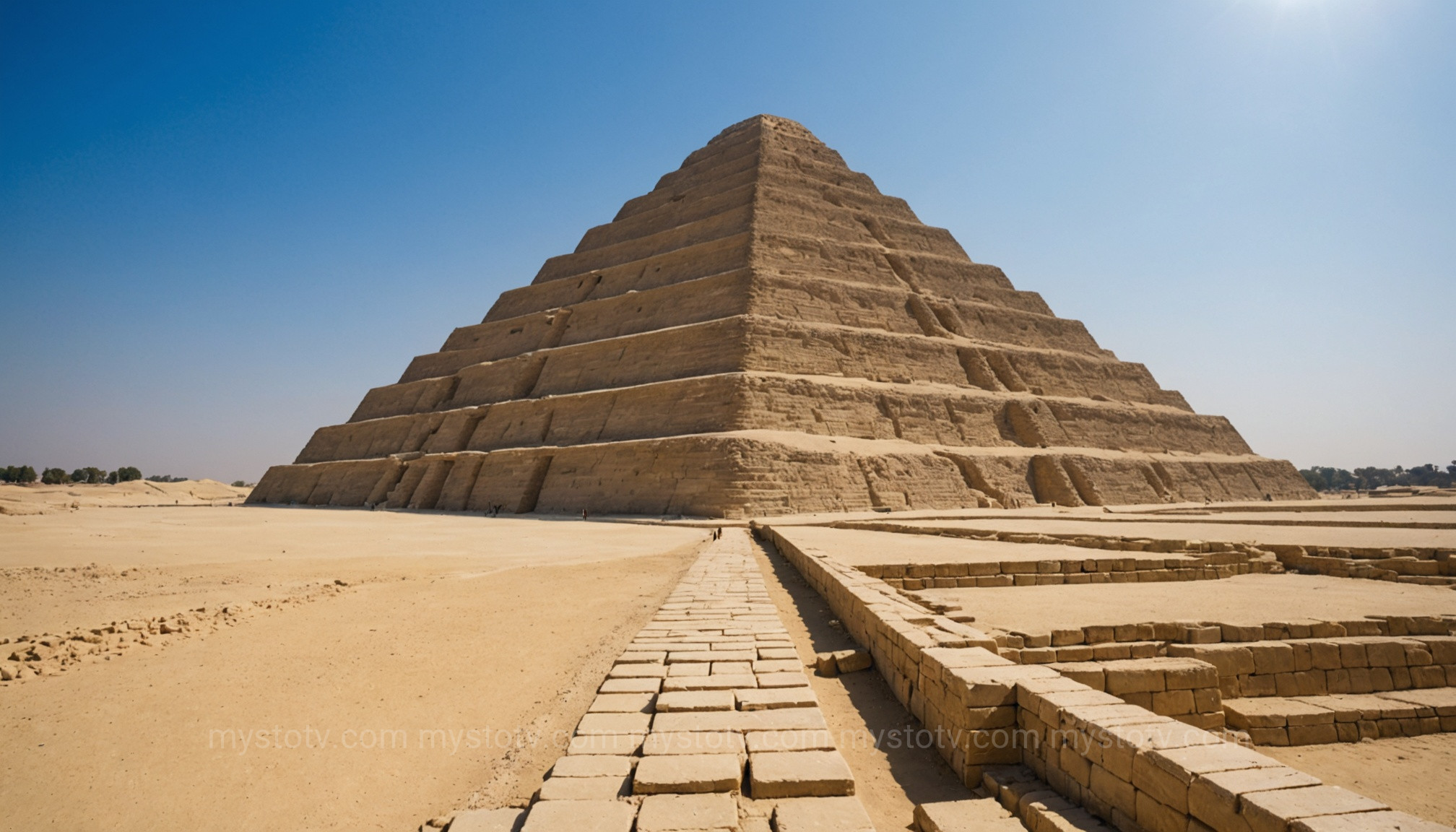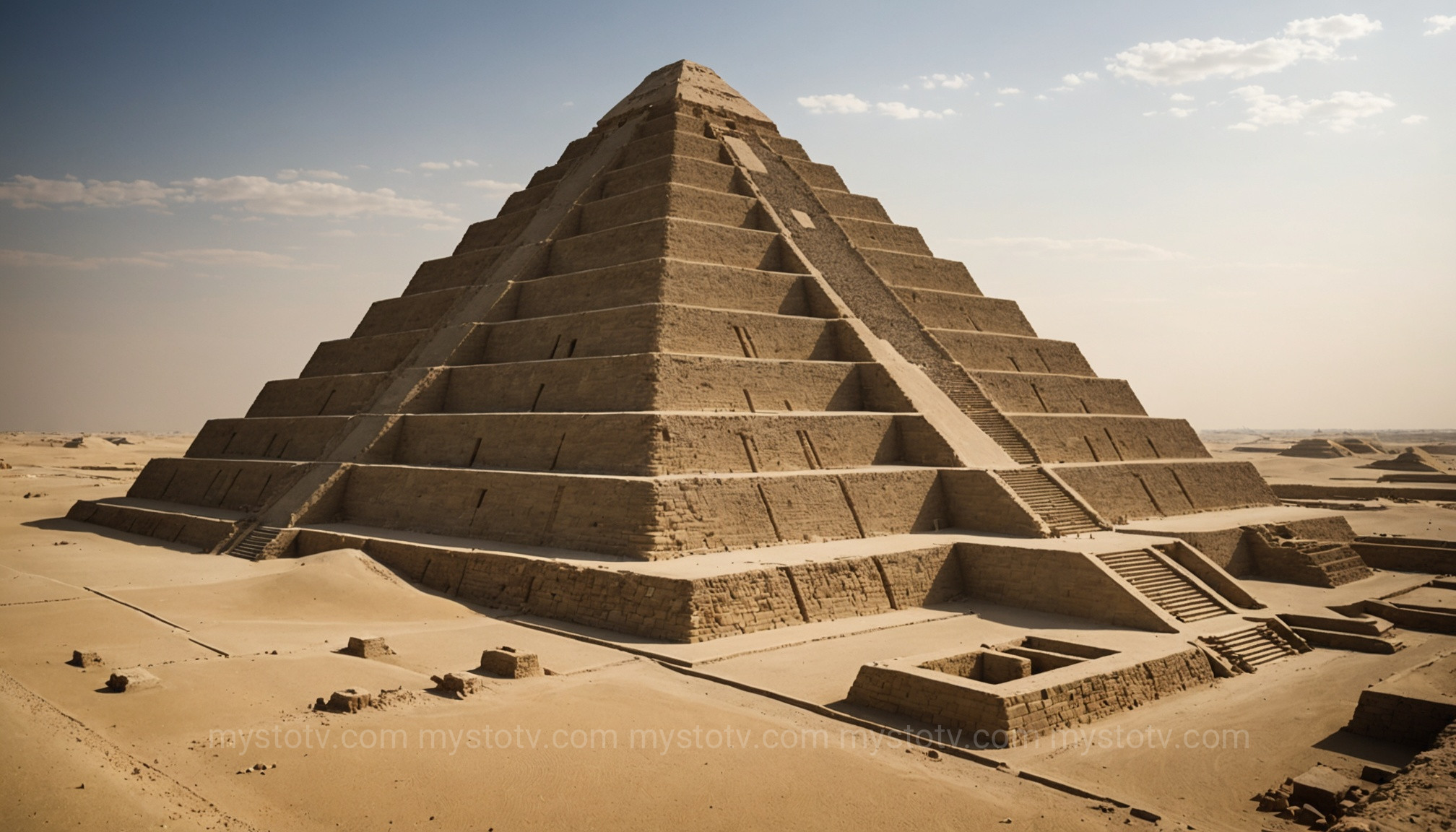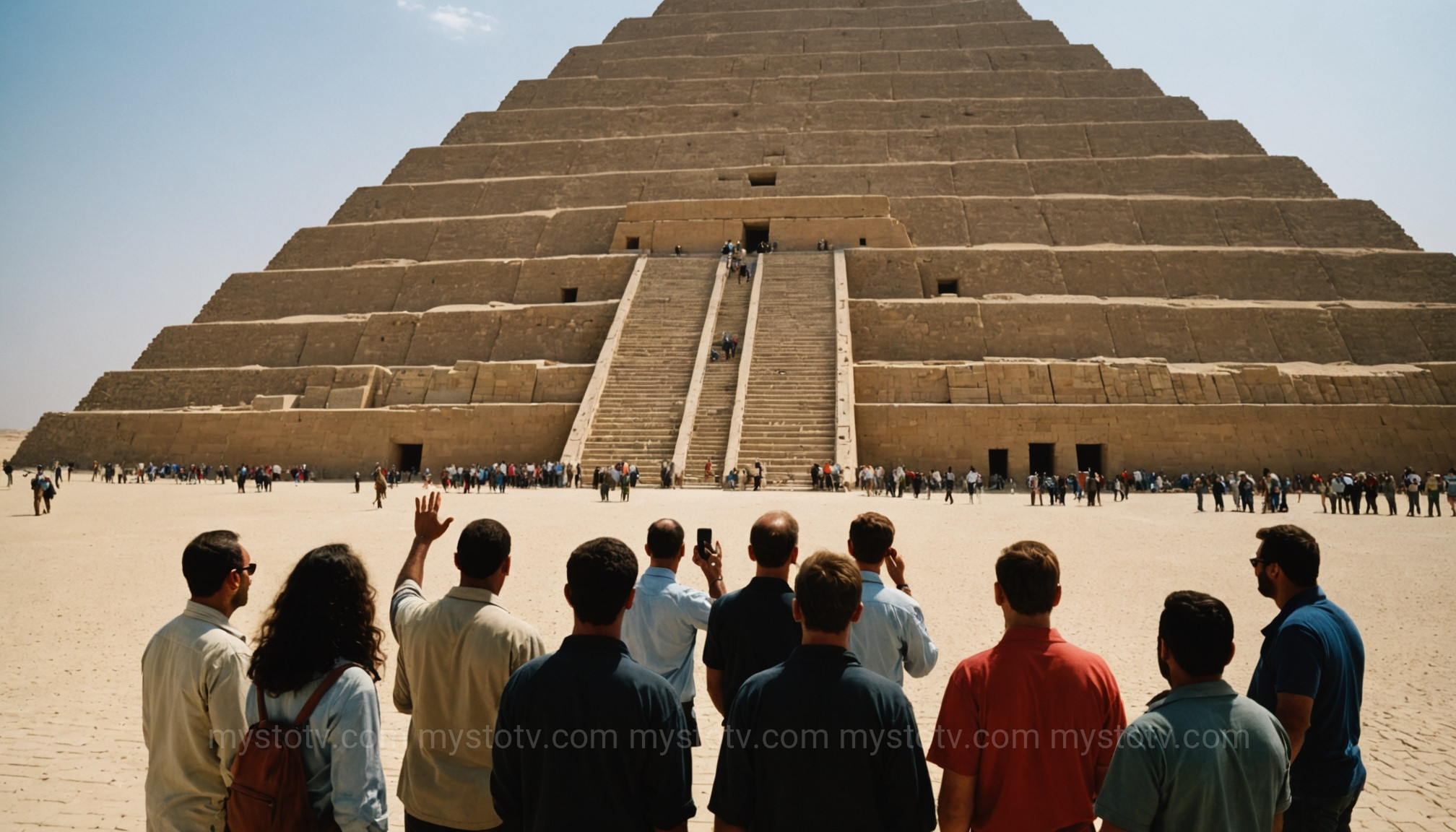Contents
- 1 The Historical Revolution of the Step Pyramid of Djoser
- 2 Imhotep: The Genius Architect Behind the Step Pyramid of Djoser
- 3 Deconstructing the Design of the Step Pyramid of Djoser Complex
- 4 Visiting the Step Pyramid of Djoser Today: A Practical Guide
- 5 The Enduring Legacy of the Step Pyramid of Djoser
- 6 Frequently Asked Questions About the Step Pyramid of Djoser
- 7 References
The Historical Revolution of the Step Pyramid of Djoser

The construction of the step pyramid of djoser was not merely an architectural achievement; it was a civilizational leap forward. Before its creation during the Third Dynasty of Egypt (circa 2670 BCE), royal tombs and significant structures were built primarily from perishable materials like mudbrick and wood. While effective for their time, these materials were tethered to the earth and the cycle of decay. The pyramid marked a radical departure, introducing large-scale stone construction to the world and forever changing the trajectory of monumental building. This shift represents a profound change in the Egyptian worldview, an attempt to conquer mortality by building for eternity with a material that could withstand the ravages of time.
From Mudbrick Mastaba to Stone Monument
To understand the pyramid's importance, one must first understand what it replaced: the mastaba. A mastaba (Arabic for "stone bench") was a rectangular, flat-roofed tomb with sloping sides, built over an underground burial chamber. For generations, these mudbrick structures were the standard for elite and royal burials. They were impressive but impermanent. The step pyramid of djoser began its life as a large, square stone mastaba—already an innovation. But its architect, Imhotep, was not content. In a stroke of genius, he decided to build a smaller mastaba on top of the first, and then another, and another, ultimately creating a towering structure of six "steps" reaching a height of over 60 meters (about 200 feet). This wasn't just building bigger; it was a complete reconceptualization of the tomb as a stairway for the pharaoh's soul to ascend to the circumpolar stars.
King Djoser and the Dawn of the Old Kingdom
The pharaoh behind this revolution was Netjerikhet, more commonly known today as Djoser. His reign marks the beginning of the Old Kingdom, a period of unprecedented stability, prosperity, and centralized power in Egypt. The construction of a monument as vast and complex as the step pyramid of djoser would have been impossible without a sophisticated state apparatus. It required organizing and feeding a massive labor force, quarrying and transporting immense quantities of limestone, and developing entirely new engineering techniques. The pyramid, therefore, is not just a tomb for one king; it is a testament to the organizational power of the early Egyptian state and the divine authority of the pharaoh who could command such a project into existence.
Imhotep: The Genius Architect Behind the Step Pyramid of Djoser
No discussion of the step pyramid of djoser is complete without honoring its creator, Imhotep. He was Djoser's vizier, or chief minister, but his talents extended far beyond politics. He was a high priest, a healer, a poet, and, most famously, an architect and engineer. Imhotep is the first architect in history known by name, a figure so revered that he was deified some 1,400 years after his death, worshiped as a god of medicine and wisdom. His work on the pyramid was so revolutionary that it secured his legacy for millennia. His vision was not merely about stacking stones; it was about creating a divine space that would serve the king for all eternity.
The Vision of a Polymath
Imhotep's genius lay in his ability to translate religious concepts into physical form. The step pyramid was a machine for resurrection, a tangible representation of abstract belief. The surrounding complex, which he also designed, was a stone replica of the temporary structures used in royal rituals, thus making them permanent for the king's afterlife. He utilized stone to mimic organic materials like wood, reeds, and woven mats, a fascinating detail that can still be seen today in the columns and ceilings of the complex. This demonstrates a mind that was not only technically proficient but also deeply immersed in the cultural and religious symbolism of his time. This transition from temporary to eternal forms in stone was a key part of what made the step pyramid of djoser so groundbreaking.
The Architectural Innovation: Stacking Mastabas

The development of the pyramid was an evolutionary process. Archaeological evidence suggests that the plan changed multiple times during construction. It began as a square mastaba (M1), was later enlarged (M2), and then expanded again into a small, four-stepped pyramid (P1). The final, grand vision was the six-stepped pyramid (P2) we see today, with a rectangular base measuring approximately 121 by 109 meters. This iterative design process is a hallmark of true innovation. Imhotep was solving problems and refining his vision in real time, learning the properties of his new medium—stone—as he went. This process of stacking mastabas was the crucial intermediate step that made the later, smooth-sided pyramids of Giza possible.
Deconstructing the Design of the Step Pyramid of Djoser Complex
To focus solely on the pyramid is to miss half the story. The step pyramid of djoser is the centerpiece of a vast 15-hectare (37-acre) funerary complex, the first of its kind. This entire enclosure was a meticulously planned "city for the dead," designed to provide the king with everything he would need in the afterlife. It was surrounded by a 10.5-meter-high limestone wall with a distinctive paneled facade meant to replicate the walls of the royal palace at Memphis. The complex was a microcosm of the Egyptian world, rendered in eternal stone.
More Than Just a Tomb: The Funerary Complex
The complex contains numerous functional and symbolic buildings. The single true entrance leads into a long colonnaded corridor, its ceiling supported by 40 stone columns carved to look like bundles of plant stems—another example of stone mimicking organic forms. This opens into the Great South Court, a large open space where the king could theoretically perform rituals associated with his rule. The entire complex was designed as a stage for the king's eternal existence and ceremonies, a far more elaborate concept than the simple tombs that preceded it.
The Symbolic Courts and Chapels
Among the most significant areas is the Heb-Sed Court. This was built to perpetually host the Heb-Sed festival, an ancient ritual of royal rejuvenation typically celebrated after a king had reigned for 30 years. By building a stone court for the festival, Djoser and Imhotep ensured the king's power could be renewed for all eternity. The court is lined with dummy chapels, solid structures that served a purely symbolic purpose. Elsewhere in the complex are the "House of the North" and "House of the South," pavilions representing Upper and Lower Egypt, reinforcing the king's role as the unifier of the two lands, a key aspect of pharaonic identity.
The Subterranean World Beneath the Step Pyramid of Djoser
As impressive as the surface structures are, an equally complex world exists beneath the step pyramid of djoser. A central shaft, 7 meters square and 28 meters deep, descends to the burial chamber. Branching off from this are kilometers of tunnels and galleries forming a labyrinthine network. These chambers were used for storing grave goods and for the burials of royal family members. Most famously, some of the galleries were decorated with thousands of blue-green faience tiles meant to imitate the reed-mat walls of the king's earthly palace. These "blue chambers" created a beautiful and serene environment for the pharaoh's spirit, deep within the earth.
Visiting the Step Pyramid of Djoser Today: A Practical Guide

A visit to Saqqara offers a different experience from Giza. It is often less crowded, allowing for a more contemplative and personal connection with the monuments. The site is vast, and exploring the full complex around the step pyramid of djoser can take several hours. It is typically visited as part of a day trip from Cairo that also includes the ancient capital of Memphis and the pyramids at Dahshur. After years of being shrouded in scaffolding, the pyramid has re-emerged, more magnificent than ever. After a massive restoration project, visitors can now experience this monument like never before, a topic we'll explore in our practical visitor's guide.
A New Era of Access: Post-Restoration Insights
After a painstaking 14-year restoration project, the step pyramid of djoser was fully reopened to the public in 2020. This massive undertaking stabilized the fragile structure, repaired damage sustained over millennia, and restored parts of the facade and the interior. The most exciting development for visitors is the new ability to enter the pyramid itself. A ticket allows access to a portion of the subterranean corridors, including the main burial shaft, offering a glimpse into the hidden world designed by Imhotep. This provides an unparalleled opportunity to appreciate the engineering and artistry that went into this ancient wonder.
The Enduring Legacy of the Step Pyramid of Djoser
The importance of the step pyramid of djoser cannot be overstated. It was the prototype for all subsequent pyramids and a catalyst for an architectural arms race that would culminate in the Great Pyramid of Giza just a few generations later. It was a school where Egyptian architects and builders learned the art of stone construction on an epic scale, developing the skills, tools, and organization needed for future projects. Its legacy is not just in its form but in the knowledge it generated.
The Blueprint for the True Pyramids
The transition from a stepped design, born from Imhotep's innovative vision, to a smooth-sided "true" pyramid was a critical learning curve for Egyptian builders. Subsequent pharaohs attempted to build on Imhotep's success. The pyramid at Meidum, for example, started as a step pyramid and was later converted by filling in the steps with casing stones, an experiment that ultimately failed. This process of trial and error, which began at Saqqara, was essential for perfecting the techniques that would be used to create the geometrically perfect pyramids at Dahshur and Giza. Without the pioneering work on the step pyramid of djoser, those iconic wonders might never have been built.
A UNESCO World Heritage Site
In 1979, the historical significance of the area was formally recognized when it was inscribed on the UNESCO World Heritage list as part of the "Memphis and its Necropolis – the Pyramid Fields from Giza to Dahshur" site. UNESCO acknowledges it as a "funerary complex of exceptional architectural importance" and a pivotal moment in history. This designation helps ensure the preservation of the step pyramid of djoser for future generations, safeguarding this irreplaceable monument to human ingenuity.
Frequently Asked Questions About the Step Pyramid of Djoser
- Can you go inside the Step Pyramid of Djoser?
- Yes. Following an extensive restoration project completed in 2020, the pyramid is now open to visitors. An additional ticket allows you to enter and walk through some of the restored subterranean corridors and see the central burial shaft, offering a unique look at the pyramid's internal structure.
- Who was buried in the Step Pyramid of Djoser?
- The pyramid was built as the tomb for Pharaoh Djoser, a king of the Third Dynasty of ancient Egypt (reigning around 2670 BCE). While his granite burial chamber is at the bottom of the central shaft, his mummy has never been found, which is common for pyramids that were looted in antiquity.
- Why is the Step Pyramid of Djoser so important?
- Its importance is threefold: it is considered the world's first large-scale stone building, it was the very first pyramid the Egyptians built, and its innovative stepped design was the crucial architectural and engineering step that led to the development of the later, smooth-sided pyramids like those at Giza.
- How is the Step Pyramid different from the Giza Pyramids?
- The most obvious difference is its design—Djoser's has six visible "steps," while the Giza pyramids have smooth, straight sides. The step pyramid is also significantly older (by about a century) and is the centerpiece of a large, complex enclosure with many other symbolic buildings. The Giza pyramids, while having associated temples, stand more as isolated monuments.
References
- Egyptian Ministry of Tourism and Antiquities. (2020, March 5). In a majestic ceremony, the Prime Minister and the Minister of Tourism and Antiquities open the Pyramid of Djoser in Saqqara after its restoration.
- UNESCO World Heritage Centre. (n.d.). Memphis and its Necropolis – the Pyramid Fields from Giza to Dahshur. https://whc.unesco.org/en/list/86/
- Baines, John, and Málek, Jaromír. Cultural Atlas of Ancient Egypt. Checkmark Books, 2000.
- Verner, Miroslav. The Pyramids: The Mystery, Culture, and Science of Egypt's Great Monuments. Grove Press, 2001.
From its tiered silhouette against the desert sky to the labyrinth of tunnels deep within its core, the step pyramid of djoser remains one of humanity's greatest achievements. It is more than a tomb; it is a declaration of ambition, a monument to innovation, and the stone manuscript from which the story of the pyramids was written. To explore it is to walk back in time and witness the very moment when architecture reached for the eternal.